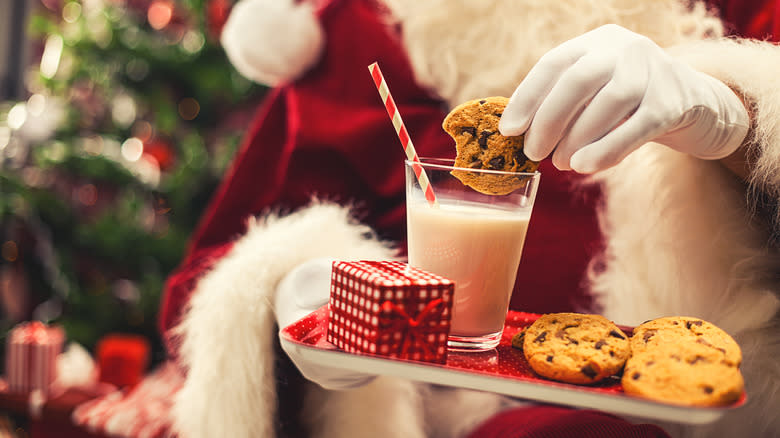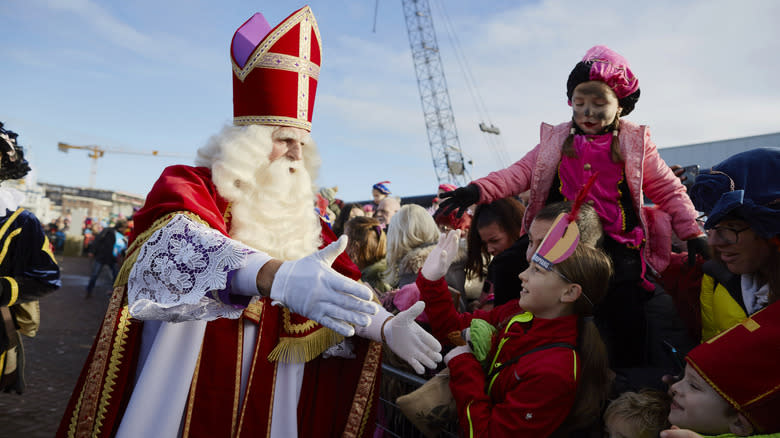The Feast That Inspired The Tradition Of Leaving Cookies For Santa

Christmas may be a time of lights, shopping, and gifting modern consumer products, but one simple tradition, leaving cookies for Santa, has origins that can be traced back hundreds of years. In the United States, leaving out cookies and milk has been around for generations, and is usually done by children as a way to help feed Santa and his reindeer for their long journey around the world. It dovetails nicely with the larger tradition of Christmas cookies, which dates back to the Middle Ages in Europe when cookies were an easily stored and shared gift that could be given out during the holidays. The history of leaving gifts for Santa is just as old and actually predates the very idea of "Santa" himself. It started as a tradition for the feast of his namesake, St. Nicholas.
St. Nicholas was a bishop in the 3rd century who became famous for his charity and generosity, specifically towards children. Celebrations of St. Nicholas throughout Europe drew on and merged with older pagan traditions where kids would leave out gifts for traveling gods, like carrots for horses, in exchange for small presents. The Saint's festival waned in popularity during the Protestant Reformation of the 1500s but stayed popular in the Netherlands and some parts of Germany. There, the celebration was moved back from its original date on December 6 and merged with Christmas.
Read more: Chocolate Brands, Ranked Worst To Best
By The 1930s, Leaving Cookies For Santa Was An American Tradition

The Dutch brought their Christmas traditions over to the U.S. via their colony of New Netherlands in the 17th century. The Dutch name for St. Nicholas, Sinterklaas, eventually evolved into Santa Claus, and they also brought a culture of cookie-making to modern-day New York. Dutch "cookeys," appeared in the earliest American cookbooks, and they even brought gingerbread to the U.S., which dates back to the 13th century in the Netherlands and remains a holiday favorite to this day.
The milk and cookies practice gained more prominence during the Victorian era when hospitality as a host was an important cultural value. The idea of childhood was also evolving during this time, and parents were encouraging children's growth by creating unique activities for them that would help educate them. The first written mention of "milk and cookies" for Santa appears during this time in 1870. It became a full-on American tradition during the Great Depression in the 1930s, when parents wanted to encourage their children to be generous during hard times, and show gratitude for the gifts they did get.
That form of the practice has stayed more or less intact into the modern day. But each aspect of the tradition has its roots in ancient practices and holidays like the feast of St. Nicholas, that have been filtered down to us through the values of past generations.
Read the original article on Tasting Table.